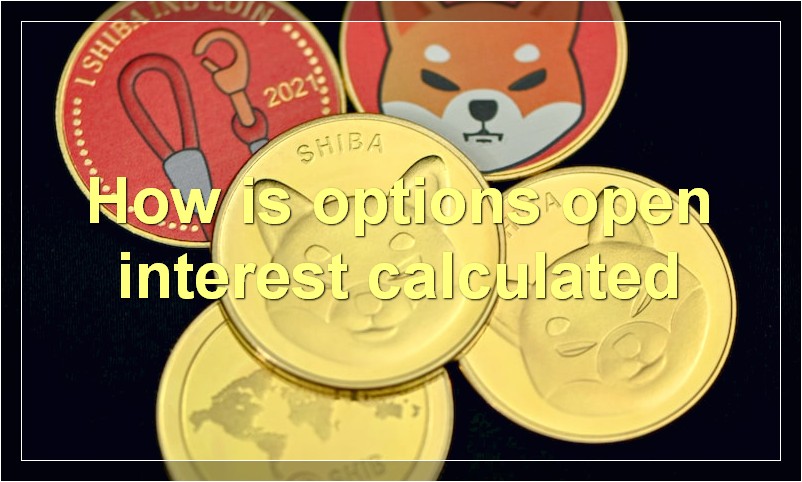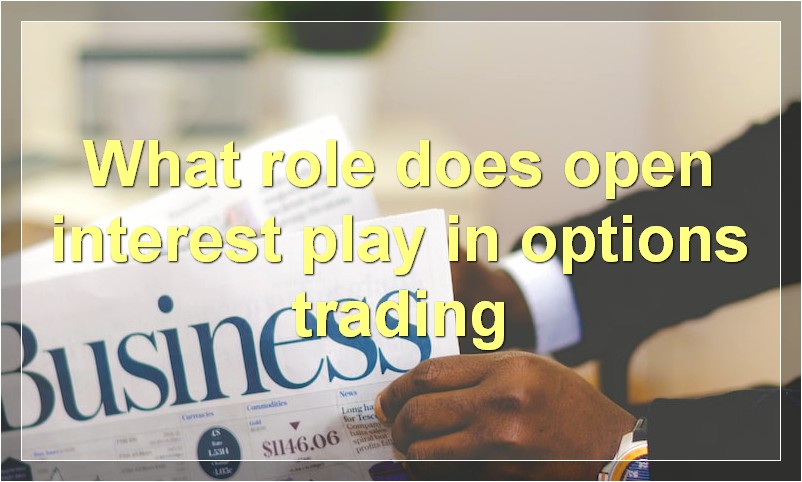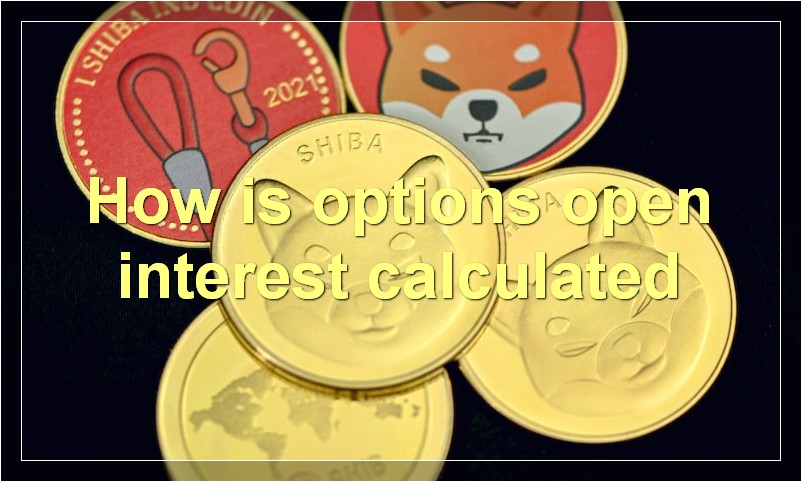If you’re new to options trading, you may be wondering what open interest is and how it can impact your trades. In this beginner’s guide, we’ll explain everything you need to know about open interest and how it can affect your options trading strategy.
What is options open interest
When it comes to options trading, open interest is the number of outstanding contracts that are held by traders. It is a key metric that can be used to gauge market activity and sentiment. Open interest can be used to identify trends and potential reversals, as well as provide clues about the future direction of the market.
In general, high open interest means that there is a lot of activity in the market and that there is a lot of interest in the underlying asset. Low open interest, on the other hand, indicates that there is less interest in the market.
Open interest is important because it can give you an idea of how active a market is. It can also give you an idea of what direction the market might be moving in. For example, if there is a lot of open interest in call options (options that give you the right to buy an asset at a certain price), it could be an indication that the market is expected to go up.
If you’re new to options trading, open interest is something that you should keep an eye on. It can be a helpful tool in your arsenal as you try to navigate the markets.
How is options open interest calculated

Options open interest is calculated by taking the total number of open contracts for a particular option and subtracting the number of contracts that have been closed. The result is the total number of contracts that are still open.
What factors affect options open interest
When it comes to options trading, open interest is the number of outstanding contracts that are held by traders at any given point in time. This metric is used by traders to gauge the level of activity in the market and to make decisions about their own trading strategies. There are a few factors that can affect open interest, including:
-The price of the underlying asset: If the price of the underlying asset moves up or down, it can affect the level of open interest. For example, if the price of a stock goes up, more traders might be interested in buying call options on that stock, which would increase open interest.
-The expiration date of the options: The closer an options contract is to its expiration date, the less time there is for the underlying asset’s price to move enough to make a profit. As a result, open interest tends to decline as expiration approaches.
-The level of volatility in the market: High levels of volatility can lead to increased open interest, as traders look to take advantage of the potential for large price movements. Conversely, low levels of volatility can lead to decreased open interest, as traders become less willing to take on the risk of volatility.
What is the difference between open interest and volume for options
Open interest represents the total number of outstanding contracts that are held by traders at the end of the day. Volume, on the other hand, represents the number of contracts that are traded during the day.
Why is options open interest important
Open interest is the number of options contracts that are outstanding and have not been exercised or closed. It is a good indicator of market activity and liquidity. Open interest is important because it provides information about the supply and demand in the market. It also gives clues about the direction of the market and the strength of the current trend.
What role does open interest play in options trading

Open interest is the number of outstanding contracts on a particular security. Options traders use open interest to gauge market activity and liquidity. A high open interest means there is a lot of activity and liquidity in the market. A low open interest means there is less activity and liquidity.
What happens to options open interest when options are exercised
When options are exercised, the options open interest decreases. This is because when an option is exercised, it is no longer an open contract. The options open interest is the number of contracts that are still open and have not been exercised. When options are exercised, the options open interest decreases because the number of contracts that are still open decreases.
Is there a relationship between options open interest and price
While there is no definitive answer to this question, many market participants believe that there is a relationship between options open interest and price. Open interest is the number of outstanding contracts for a particular security or commodity. It is a good indicator of market activity and liquidity. Price, on the other hand, is the amount of money that buyers are willing to pay for a security or commodity.
Some market participants believe that when open interest increases, it indicates that more traders are bullish on the underlying security or commodity, which in turn, drives up the price. Others believe that when open interest decreases, it indicates that more traders are bearish on the underlying security or commodity, which puts downward pressure on prices.
There is no right or wrong answer when it comes to the relationship between options open interest and price. It ultimately comes down to what each individual trader believes.
What happens to options open interest when options expire
When options expire, the open interest for those options contracts disappears. This is because when an option expires, it becomes worthless and is no longer traded. The only exception to this is if the option is exercised, in which case the open interest will be transferred to the underlying contract.
Does high options open interest mean there is a lot of trading activity
When options open interest is high, it usually means that there is a lot of trading activity taking place. This is because more traders are interested in buying and selling the options, which increases the amount of activity.

